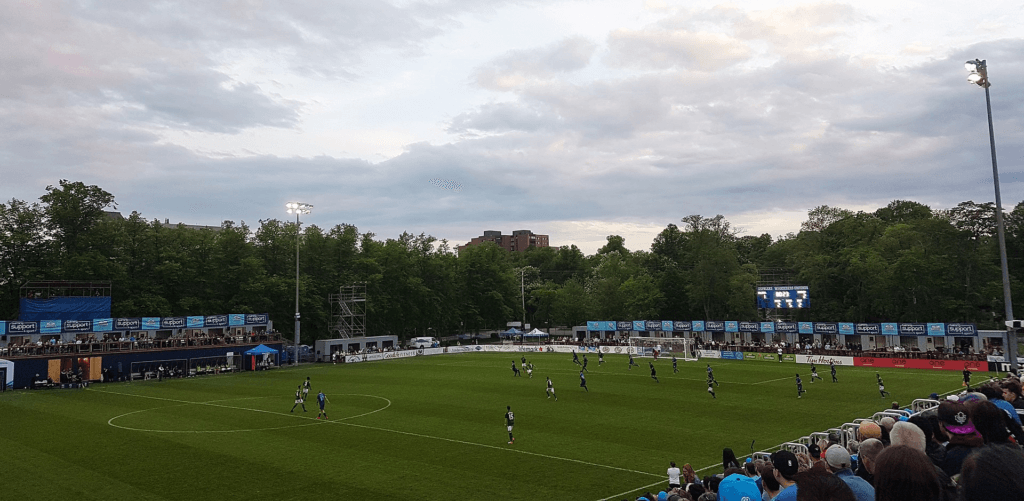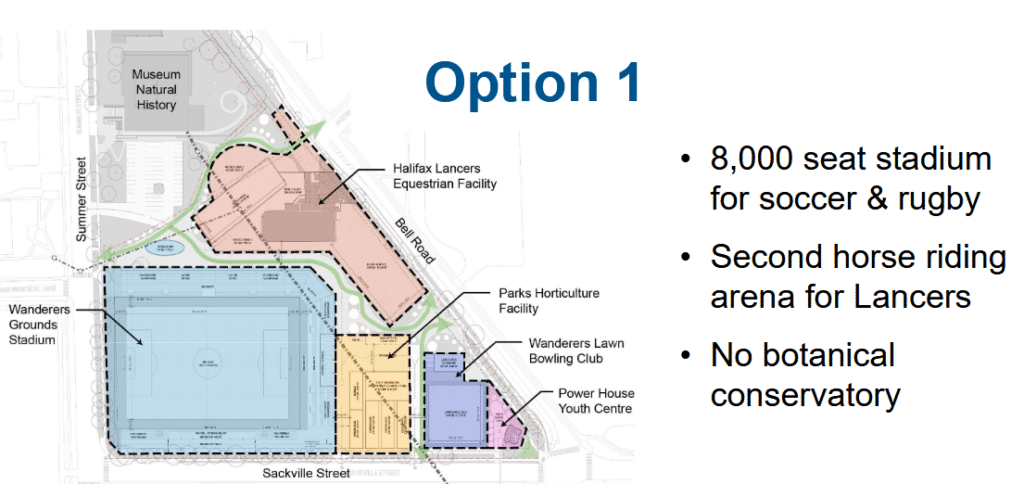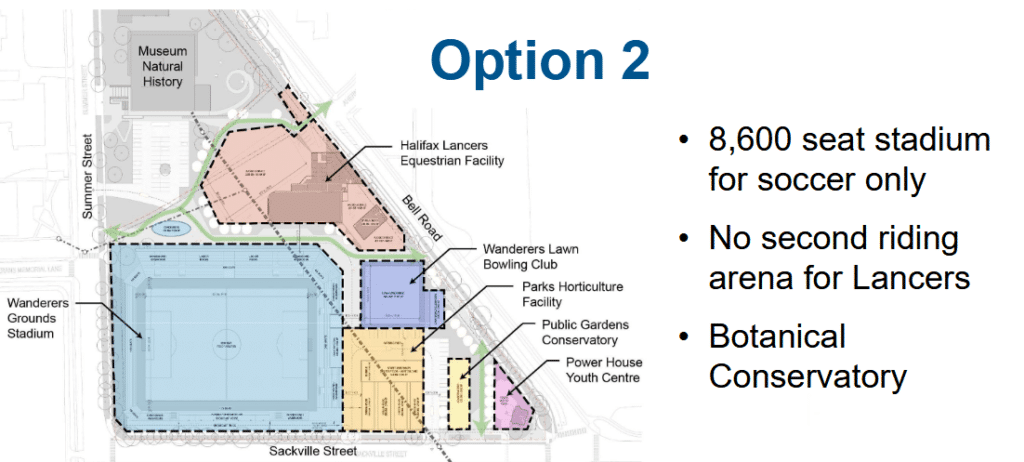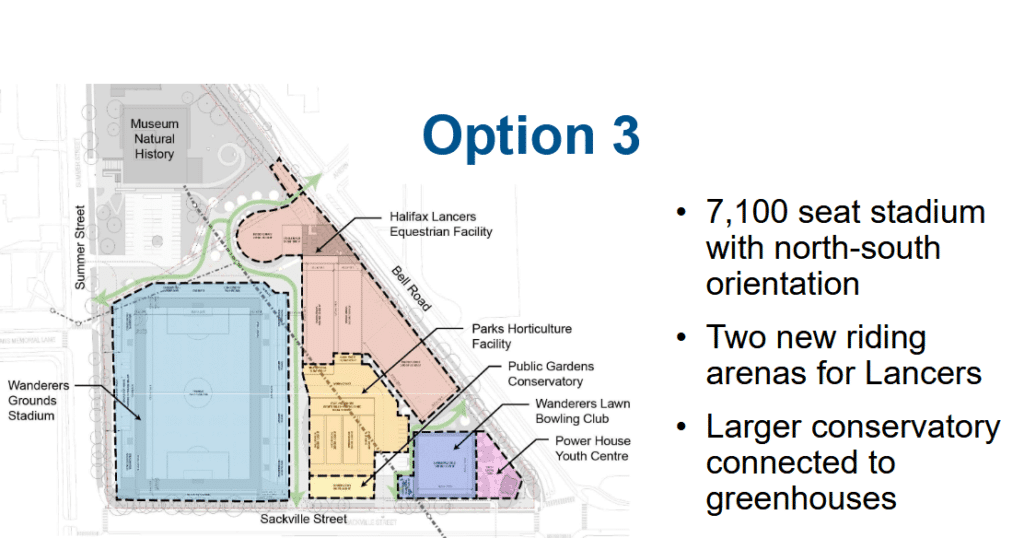
Agenda, August 19
Slayter Street Local Bikeway
The major item for District 5 on Council’s agenda was the Slayter Street Local Bikeway. Slayter Street was identified in the Integrated Mobility Plan as part of the Regional Centre bike network. It’s an important piece as it provides a connection to other segments of the network including in Dartmouth North/Burnside, the Bridge, and Downtown. Slayter Street joins a lot together

A local street bikeway isn’t a bike lane. The idea behind a local street bikeway is that if you do enough traffic calming to slow down vehicles and reduce vehicle volumes, than bikes and vehicles can share the space. The positive of this for residents who don’t cycle is traffic calming on their street and minimal impacts to street parking.
So what does the future of Slayter Street entail? At the north end, there will be a small section of multi-use path along Albro Lake Road to join Slayter Street to the already approved, but not yet built Dartmouth North project on Victoria Road. There would be no change to Slayter between Albro Lake and Woodland. At the intersection of Woodland, a new half-signal would be installed so that when pedestrians or bikes want to cross Woodland Avenue, a red light would activate (same sort of system as what exists by the Bridge Terminal on Nantucket). Slayter would be unchanged from Frances Street to Thistle, but to facilitate connections to the rest of the growing active transportation network, a new multi-use pathway would be built along Nantucket and cross over the Common to connect to Slayter at Victoria via an improved crossing at Gladstone. There would also be a pathway built on the Common (paving existing pathway) from the existing Dahlia Street connection, up and around the ball field, across Thistle, and then along the field next to Dartmouth High to join up with Nantucket.

The main point of controversy with everything proposed with Slayter Street is the planned traffic diverter at France Street. The plan is to redirect through vehicle traffic to Victoria Road. Vehicles on Slayter coming from Woodland Avenue would have to turn right onto Frances and vehicles travelling up Slayter Street from Thistle would have to turn left onto Frances Street.
Why is HRM looking to divert traffic? A local street bikeway only works if speeds and traffic volumes are low. HRM carried out traffic counts on Slayter Street and the results reveal that the street has almost no traffic between Woodland and Albro Lake Road, some traffic between Woodland and School, and lots of traffic between School and Thistle. The School to Thistle portion was counted as 1,607 vehicles a day, which is more vehicle traffic than HRM wants for a local street bikeway, necessitating the consideration of diversion. A lot of the traffic coming onto Slayter at Thistle is heading to the bridge, but some of it carries on up to Woodland Avenue. In my own travels, if I’m going out to Dartmouth Crossing, I’ll often take this route and I’m sure that’s true of others on the south side of Thistle. HRM wants to divert traffic off Slayter Street and after discussions with HRM’s traffic authority and with emergency services, diverting at Frances Street is the easiest place to make a change. HRM is planning to install a diverter at Frances and then revaluate traffic counts to see if a further diversion at Thistle is needed. If diverting through traffic at Frances doesn’t adequately reduce vehicle volumes, than HRM will have to consider diverting traffic at the Thistle end as well. The Thistle Street end will be considered further in future as part of planning for a connection from Slayter down to Ochterloney and the planned multi-use pathway in Starr Park.

Over the years, a frequent complaint in my inbox from the Brightwood area has been around traffic on Slayter Street, both around speed and people ignoring existing turn restrictions designed to limit cut-through traffic. These are issues that will no doubt increase in the years ahead as HRM grows and traffic volumes continue to increase. The proposed diverter will completely stop Woodland Avenue short-cutting, but it does mean that area residents will lose some ease of vehicle access too. You might have to drive around the block depending on where you’re heading rather than take the most direct route. Whether that is a trade-off that is deemed acceptable is going to vary from person to person and I have heard diverging opinions on that from folks in the neighbourhood.
Most of the concern I have heard on Frances diverter has come from folks who live around Vanessa who will be on the north side of the diverter. The issue raised is the diverter means that to head south towards the Bridge or Downtown Dartmouth (without going around the block) a left turn will be needed across Woodland Avenue or Victoria Road. The ability to head down Slayter and come out at Thistle or use the light at School Street will disappear. Victoria and Woodland are both busy streets and turning left across them isn’t something that everyone is comfortable doing. I have been discussing the possibility of changing the proposed half-signal at Woodland and Slayter into a full traffic light. A light at Woodland would create a place where a protected left turn would be possible. Staff have some concerns around that idea though, principally the proximity of a set of lights to the intersection with Woodland. I don’t really understand how a set of lights would be fundamentally different in terms of impacts on Victoria and Woodland than the half-signal that is currently proposed since both would stop traffic, but I’m not an engineer. I will discuss this possibility further with staff as I think it would be a way to respond to some of the concerns raised around left turns onto Woodland and Victoria.
In the end, Council approved the Slayter Street project 11-5. Basically the same five of my colleagues (Gillis, Young, Purdy, Hendsbee, Fillmore) that have been voting against most bike related projects over the last few months did so again. Council has a clear spilt on active transportation issues! I found the Mayor’s vote particularly surprising because of what he has said when Council was debating his own motion to pause active transportation projects. The Mayor indicated he supports cycling infrastructure, but wants it to be less costly and on side streets where it is less impactful to vehicle traffic. The Slayter Street project is on a side street. It’s not on Victoria Road. This is already the quieter side street option. It’s also the least costly approach since it is relying on multi-use paths, and traffic calming rather than getting into separated infrastructure. Slayter Street would appear to be what the Mayor said he wants and yet he voted against it. In debate, he spoke briefly and cited costs as the reason he couldn’t support it. I suppose the other alternative to not doing Slayter Street is just not doing anything at all, which increasingly appears to be the Mayor’s actual active transportation policy.

Wanderer’s Grounds
Council approved advancing further planning for the Wanderer’s Block on the Halifax Common. The Wanderer’s Block has a lot going on, on it! It’s home to lawn bowls, horses, HRM horticultural staff, a youth recreation centre, and the Wanderer’s temporary stadium. The Lancers and the Wanderer’s both want to expand and so as part of the Halifax Common Master Plan, HRM has been working to sort out what the future direction for the Wanderer’s Block could look like.
The first main question is whether the temporary stadium should stay on the Wanderer’s Block and be made permanent. I was very critical of the proposed CFL stadium a few years back, but what the Wanderer’s want to do is fundamentally different. The Wanderer’s want a Downtown location and all the planning work around situating stadiums over the last few decades has clearly indicated that what makes the most sense is to locate these facilities where they can make the most of existing infrastructure and services. This typically means Downtown where good transit already exists, and where there are already bars, restaurants, and hotels. Cities that have built suburban venues have mostly had buyers remorse and many places are now looking to bring these venues back into the centre. The Wanderer’s Block, from that perspective, couldn’t be a better fit. Just being a few blocks from Downtown and Spring Garden Road is an amazing location. This is where you want a facility like this, not out on the edge of town by a highway exit.
As HRM has worked through refining planning for the Wanderer’s block, staff have narrowed things down to three different concepts, all of which involve varying trade-offs.



It’s still conceptual, but I personally think Option 3 is likely HRM’s best bet. Option 3’s stadium would be the smallest, but if the Province were willing to work with HRM to sell a portion of their property to the municipality, the stadium size could be increased in size to look more like Options 1 or 2. Maybe HRM could even look at whether we could close Sackville Street between Summer and South Park to gain some additional land for the reoriented option (an idea pitched by Councillor Morse that staff hadn’t really thought about). I think Option 1 could also work as the proposed conservatory is something that, to me, is more of a nice to have, but Option 3 is the best approach for fulfilling all the various asks for the site.
All three options do share one problem though: Money. The project costs are somewhere around $120,000,000 with Option 3 costing the most. Option 3’s price tag though is based on 7,100 seats not the 8,000 plus that we would hope to get by working with the Province to acquire some additional land. An Option 3 with a bigger stadium piece is probably more like $140,000,000. HRM has no budget for $120,000,000 or $140,000,000.
Council has heard in recent meetings just in the last few weeks that the municipality’s financial outlooks isn’t great. Our operating budget is under stress with a $60,000,000 projected gap for the coming year, and HRM hasn’t been saving enough for future capital projects, creating the possibility that HRM’s debt capacity will be mostly exhausted in just seven years. HRM is struggling to meet existing demands! HRM is rapidly coming to a choice of choosing to tell people the hard truth: stuff costs money and if you want to have the stuff, we need to pay for it or we have to cut back significantly on future capital projects, including in areas that we’re being pressed to do much better in like transit. In that context, it’s pretty hard to justify $140,000,000 for the Wanderer’s Block. It’s a compelling plan and a great vision, but the financial timing is really terrible. Unless HRM has partners coming to the table with upfront money, I just don’t see it happening.
So the next step is staff will go back engage with all the various interests on the Wanderer’s Block and others orders of government around funding to see what the art of the possible might be.

Regional Plan
Council received a presentation from staff on the current status of the Regional Plan. Long before the Houston government started habitually interfering in municipal decision-making, there has been a requirement for the Province to approve all municipal plans. This has generally been a formality, but on rare occasions, the Province has rejected municipal planning changes that conflict with Provincial priorities. The last time that I recall this happening was when the Province rejected Kings County rezonings that would have allowed for development on agricultural land back in the early 2010s. Provincial planning rejections really don’t happen often!
So it was a surprise when the Province rejected HRM’s Regional Plan earlier this month. The main reason? The Plan’s requirement for EV charging equipment in new construction and an increase in the watercourse setback from 20 metres to 30 metres. Minister of Municipal Affairs John Lohr also indicated that the Plan didn’t go far enough to improve the supply of housing, but there were no specifics attached to that and, to me, has the feel of an after-thought thrown in for good measure when the real problem was EV charging and setbacks. EV charging and setbacks are what attracted the most concern from developers and the Urban Development Institute has openly taken credit for lobbying the Province to reject the Plan over them!
A few thoughts. EV charging equipment is essential, especially in multi-unit buildings, if we’re going to transition away from gasoline vehicles. The obvious time to install charging equipment is during construction when the cost are less and can be absorbed into the overall project. Not requiring EV charging just means that at some point down the line, there will need to more expensive retrofits to install it. It’s not hard to imagine some future government incentive program to help property owners cover retrofit costs, which would be a pretty silly outcome when EV charging could be installed much more cheaply now. The Province’s own climate change plan calls for increasing the proportion of EV vehicles and expanding charging infrastructure. This rejection is short-sighted.
On setbacks, the goal is to minimize damage to the environment and reduce the threat to people and property from flooding. The 30 metre buffer increase, to the dismay of some folks in the environmental community, wasn’t even absolute. The policy would only apply to newly created lots (existing lots would still have the 20 metre requirement) and the Plan included a development agreement option for property owners who can’t reasonably comply with the expanded setbacks due to unique circumstances. Evidently when the government downloaded coastal protection to municipalities, they meant that no one else was supposed to do anything either!
Whatever you think of the merits of EV charging or providing bigger buffers around lakes, rivers, and the ocean, these are just small elements of the whole Regional Plan. It was within the Minister’s power to amend these sections without rejecting everything else. The complete rejection of the Plan is one of the more startlingly silly moves I have ever seen. Rejecting the whole Regional Plan means that everything else, from allowing short-term rentals in rural HRM, to changes to encourage mass timber construction, to removal of parking requirements, to major housing projects is also on hold.
The provincial government has had a lot of criticism of HRM for being too slow on planning and housing approvals, but with a single letter, the Province has put a whole bunch of major projects in limbo. In questioning, staff indicated the disruption to the housing supply impacts 36 projects. Of those, 12 projects have been directly impacted as they were awaiting amendments to proceed. Those 12 total over 2,000 units. The other 24 were in a more preliminary stage, but were basing development plans around the new Regional Plan policies. The exact impact on those projects is harder to quantify, but it would be many 1,000s more units. About the clearest example of ripping off your nose to spite your face anyone will ever find!
I suspect the full impacts of rejecting the Regional Plan mightn’t have been fully understand and that as the gravity of what they’ve done sets in there will be an urgent scramble to fix this self-inflicted mess. The Province grabbed the wheel and steered us hard into the ditch. What’s done is done, and now we’ll have to work together with urgency to get back on track. There is no point in HRM putting forward another version with no certainty as to what the Province wants. The Province needs to specify what they want here.

Davis Cup
One of the more controversial items on Council’s agenda was something that usually attracts little to no attention: HRM’s special events grants. Funding for HRM’s special events grants comes from the hotel marketing levy (a tax on hotel rooms) and, as a result, is a program that is primarily aimed at expanding tourism and attracting more visitors to HRM. The funding doesn’t come from general tax revenues. Events are evaluated by the Special Events Advisory Committee and the most important metric in the Committee’s deliberations, given the source of funding, are assessments of how many visitors an event might draw. The hotel industry is basically taxing itself to fund attracting more visitors.
The controversy on Tuesday is that one of the events recommended to receive funding was a $50,000 grant to the Canadian Tennis Association for HRM to host the Davis Cup. The controversy is that, through luck of the draw, Canada will play Israel in the match. I wish Luxembourg was drawn out of that hat! Given everything that is going on in Gaza, this has sparked calls for HRM to boycott the event.
I don’t pretend to have any particular expertise on the Middle East. The attack on Israel on October 7, 2023 was appalling. What has followed with the relentless attacks on Gaza has been devastating and has taken the lives of 10,000s of civilians. The federal government has called for Israel to hand over control of humanitarian aid in Gaza to the international community and has indicated that, in September, Canada will recognize a Palestinian state.
First thing to note is that decisions on boycotts in sporting events are made by sport governing bodies. When Russia was denied participation in the Olympics in Paris over the invasion of Ukraine, it wasn’t the City of Paris that decided Russia shouldn’t attend, it was the International Olympic Committee. When HRM unexpectedly hosted the World Juniors again in 2023 it was because the International Ice Hockey Federation had stripped Russia of its hosting rights. Whether Israel gets to play in the Davis Cup is up to the International Tennis Federation, not HRM.
I can understand the argument that I think many of my colleagues landed on in reaching the conclusion to provide the recommended $50,000 grant: HRM isn’t deciding who Canada plays, and the funding isn’t coming from general tax revenue. Still, I couldn’t shake the feeling that with everything unfolding in Gaza it was just the wrong thing to do. HRM isn’t making the call on who plays in the Davis Cup, but that doesn’t mean we have to actively support the event. In the end, Council voted 10-6 to approve the grant. I alongside Councillors White, Cleary, Hinch, Morse, and St. Amand voted against with Patty Cuttell absent. Unless the Tennis Federation decides otherwise, the Davis Cup will go ahead in HRM in September.
Other
- Directed staff to consider an increase in non-profit affordable housing tax relief to HRM’s upcoming Housing Strategy
- Approved one more addition to the 2025 Community Grants Program (Parish of St. Peter’s Church heritage work sorted out getting the correct permission from the actual owner, the Anglican Diocese of Nova Scotia and PEI)
- First reading for bylaw changes to adjust cemetery service costs
- Appointed several new building officials
- Directed staff to consider a potential crossing of the CN tracks in Halifax between Scott Street and Chisoholm Avenue in the next iteration of the Active Transportation Priorities Plan
- Approved three new commemorative names in Bedford and Halifax
- Received an update from the Halifax Partnership on their People, Planet, Prosperity economic plan
- Approved this year’s list of grants for non-profit/charity property tax relief
- Requested staff consider emergency egress options for already built subdivisions be considered in the upcoming budget
- Requested a staff report on closing Argyle Street between Sackville and Blowers to vehicle traffic permanent rather than seasonal
- Approved special events funding for The Gifts We Carry event


With the rejection of the regional plan…..
Is the Horizon court development now compliant again?
Is the missing middle designation on the North/east side of Victoria now off the table?
What’s the status of the intensification of former r1 areas?
Hi John. The rejection of the Regional Plan doesn’t impact the Centre Plan changes that were previously made. So established residential zoning in the Centre Plan that was increased in density is still valid so is the corridor zoning on Victoria Road. Horizon Court was a stand-alone development agreement so that issue remains with Can-Euro either having to apply to amend the Centre Plan to restore their original plan or redesign to fit the Centre Plan rules.
So has the “new” Convention Center generated a profit any year yet? That doesn’t end up discussed anymore.
The rate payers cover the deficit. Now we want to invest in a stadium and will that generate enough funds to sustain itself when it has a limited number of programming?
Re Vanessa Drive residents
I am not clear on your comment re having to drive around the block could you clarify this for me.
Surely this would depend on time of day and destination and traffic volume.
Lindsay Mayl
Yes. Depending on where you’re coming from or where you’re going or your comfort with turning across busy traffic, there might be a different path to take than is the case now.
It loses less now than it did before, but no it’s not profitable directly. It never was going to be. Stadium will likely be similar. The question on these sorts of facilities is whether it’s something we want or not.
I hate the nonresident traffic with the aggressive drivers who do not know what a stop means and thats at every side street and all way stop on Slayter St .when are people are going to wake up and realize that this is safty issue that needs to done about ASAP
I see Fillmore left a town hall meeting when questioned about the Davis Cup event and $50K contribution from HRM.
There’s no data but pretty safe to say most taxpayers don’t want their money supporting anything to do with Israel right now. Going ahead as if nothing is amiss, bad enough. Giving money, equals stamp of approval on acting like nothing is amiss. Athletes representing Isreal can’t expect that either. Anyone with basic decency on any side must say enough. Nothing happens until Israel stops. Shame on Fillmore and the other 9.
BIKE LANES ON SLATER STREET
My wife and I are members of Brightwood Golf & Country Club. We get to the golf course primarily via Woodland 》Slater 》School Street or, sometimes via Thistle 》Slater 》School Street. Your plan for Slater would force us to add to the increasing traffic on Victoria Road, or add to the traffic on Thistle.
Some sort of chicane at Slater/Fraces would keep the speeds low and still allow “local” traffic to Brightwood Golf course
We have no objection to bike lanes. Traffic calming methods on Slater have significantly slowed car traffic making the street safer for cars, as well as bikes and pedestrians.
Thanks Robert. Your journey from Woodland would instead become Victoria and then School Street to get to Brightwood. HRM is going with a diversion on Slayter because traffic volumes are higher than HRM wants for a local street bikeway and those volumes are likely to increase if we don’t take any measures given growth in the area. If volumes recorded were under 1,000 vehicles a day (the threshold in HRM’s standards) we wouldn’t be looking to divert traffic.
People going to from the golf often speed and ignor pedestrians on Slayter Street and one of them complain about the block party Brightwood had in 2019 The golf course is no friend for that area who pay taxes more han the golf course
The Slayter St bikeway project appears to have been sketched out by staff on the back of an envelope on their way to Community Council. It it utterly nonsensical, and quite likely to be quite dangerous. Your attempts to wallpaper over the impacts of this on property owners in the area and the effects upon traffic are shameful. There is absolutely no issue with things under the status quo, based upon HRMs own engineering studies and traffic counts. What problem are your proposing to spend $600,000 to fix? There is none. But there will be if this goes forward. Leave things alone, quit building monuments to yourself, and stop tinkering. You are not an engineer or a traffic expert. From what I saw at Community Council, neither are staff.
“You are not an engineer or a traffic expert.” And neither are you! Just because you don’t agree with what the experts have to say doesn’t mean they’re wrong.
It certainly doesn’t mean they’re right either. Judging from what I heard from the HRM staffer at the Community Council meeting I’m pretty sure they don’t have a handle on this proposal or its implications for residents, cyclists and drivers either. She did not inspire confidence. Take some advice, please: loop back on this and send it back to the drawing board. As it sits, it seems like it is designed to punish residents rather than make biking easier and safer, and will lose you considerable support and goodwill. Most of us do not object to improving conditions for cyclists, but this is not the way. We still cannot identify the problem this is trying to solve by restricting access to that part of the street where there is minimal vehicle traffic.
Very disappointed with the Slayter Street vote. You have not taken into consideration the safety concerns of the most impacted residents. Slayter Street is safe for cars AND bikes as is at a cost of $0.00. Much more acceptable for the vast majority of your constituents who don’t want you to waste our tax dollars on a solution for a non-existent problem. It should not be ” bikes at all costs” – which is what our current city council seems to believe.
So once again a big public project with no parking! That area is near the infirmary and is RIGHT NOW a traffic nightmare. Put it at the Expo grounds where there is ample parking. Make use of the buses! BTw, thanks for this great update. I’ll have to get my councillor to do the same.
Hi Bob. There is parking in the area around the Wanderers. There is street parking and there is parking in structured garages around Downtown including nearby on Spring Garden Road. There is also really good transit to the Wanderer’s. We can’t build these kinds of facilities with a parking space for every potential visitor…. doing so just means that you’ve built a giant parking lot and there is no soul left. The Wanderer’s works know with 6,500 with no onsite parking. Making that 8,500 isn’t going to break things.